Wachsende Schöne Kapuzinerkresse Blumen - Pflegeanleitung, Sorten, Probleme
Kapuzinerkresse ist eine Pflanze, die der Menschheit schon seit der Antike bekannt ist. Interessanterweise wurde sie damals nicht nur als Zierpflanze verwendet, sondern auch wegen ihrer gesundheitsfördernden Wirkung geschätzt. Heute gibt es viele Kapuzinerkresse-Sorten auf der ganzen Welt, und jede sieht etwas anders aus. Hier erfahren Sie, wie man diese Pflanze anbaut und pflegt. Erfahren Sie, wie Sie Kapuzinerkresse in der Küche verwenden können.
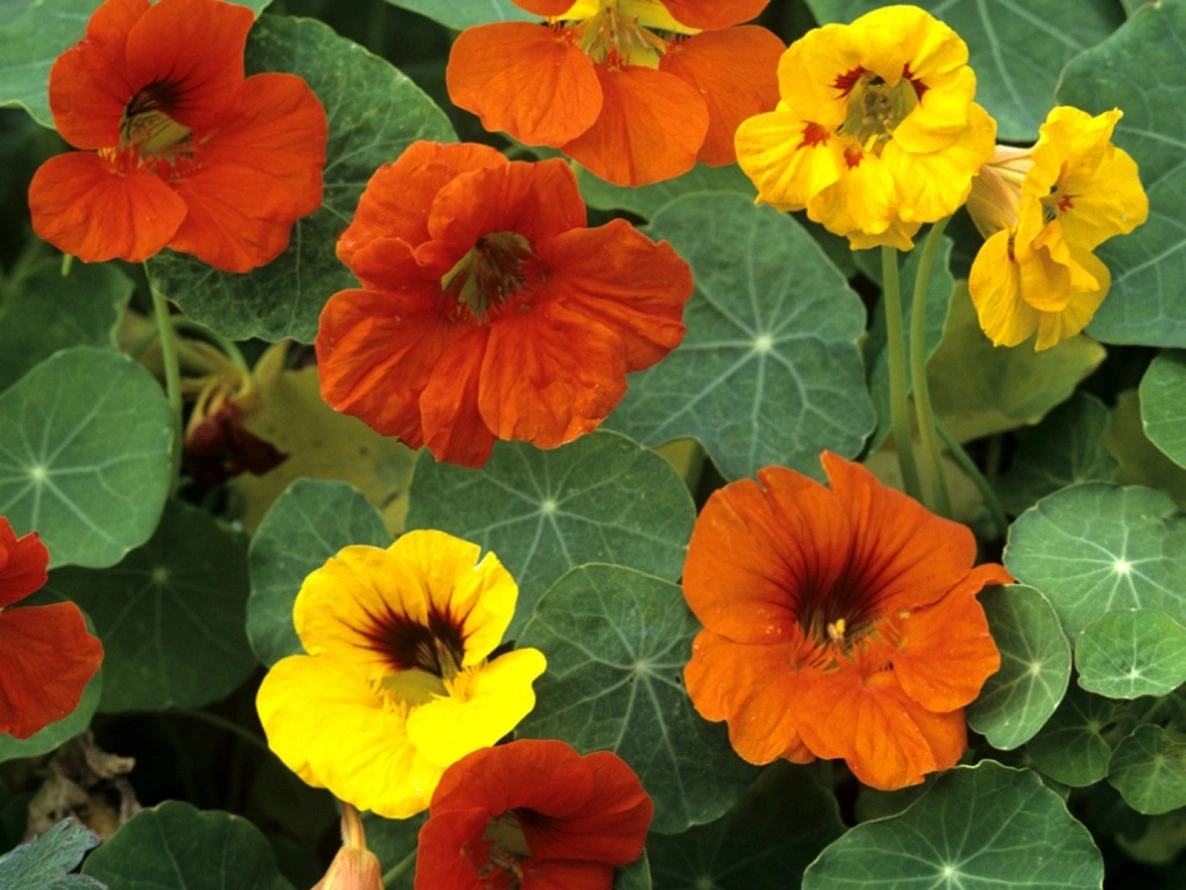
Kapuzinerkresse - was für eine Blume ist das?
Die Kapuzinerkresse (Tropaeolum) ist eine einjährige Kletterpflanze. Sie ist in der ganzen Welt beliebt - vor allem wegen ihrer langen und interessanten Geschichte. In ihrem natürlichen Lebensraum kam die Kapuzinerkresse in Südamerika vor. Sie wurde schnell nach Europa gebracht und tauchte in vielen anderen Teilen der Welt auf.
Wie sieht die Kapuzinerkresse aus?
Die Kapuzinerkresse ist eine Hängepflanze, das heißt, sie hat charakteristische lange Stängel. Je nach Sorte entwickeln manche Pflanzen sogar 4 Meter lange Ranken. Außerdem hat die Art ausgeprägte kleine, runde, hellgrüne Blätter.
Was die Blüten betrifft, so sind die orangefarbenen am beliebtesten. Die Kapuzinerkresse kann aber auch andere Farben haben. Neben Orange kann man Kapuzinerkresse auch in den folgenden Farbtönen finden:
- yellow,
- red.
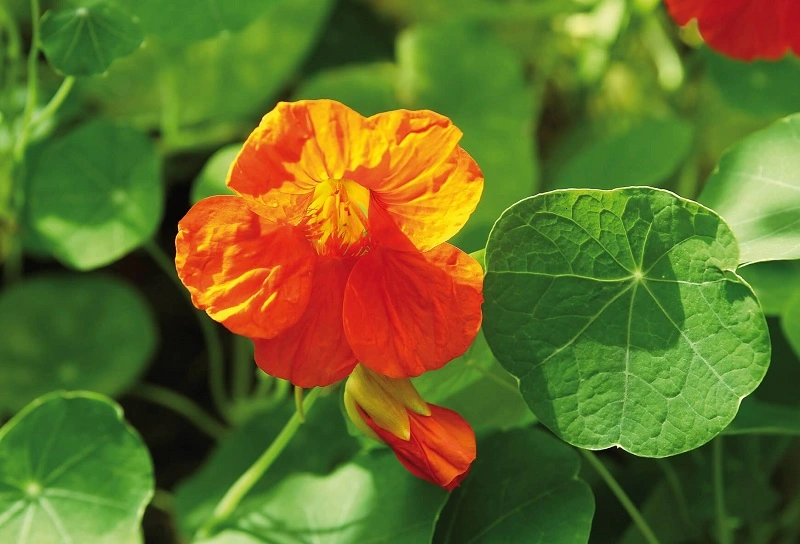
Kapuzinerkresse-Sorten
Man schätzt, dass es weltweit etwa 90-100 verschiedene Kapuzinerkresse-Sorten gibt. Einige sind sicherlich beliebter als andere. Hier sind einige Beispiele:
- Zwerg-Kapuzinerkresse,
- Garten-Kapuzinerkresse,
- dreifarbige Kapuzinerkresse,
- Kanarische Kapuzinerkresse,
- blaue Kapuzinerkresse.
Kapuzinerkresse - Pflege und Bedürfnisse
Der Anbau der Kapuzinerkresse ist nicht schwierig, sie benötigt jedoch bestimmte Bedingungen für eine gute Entwicklung und Blüte. Ein guter Standort ist wichtig. Er muss warm, sonnig und vor starkem Wind geschützt sein. Der Boden für die Kapuzinerkresse muss nicht sehr nährstoffreich sein, aber er sollte locker sein.
Die Kapuzinerkresse wächst auch ohne zusätzlichen Dünger gut, obwohl es nicht verboten ist, sie zu düngen. Wie Experten betonen, ist es gut, die Pflanze während ihrer Blütezeit zu düngen. Dies gilt sowohl für Pflanzen, die in Gärten als auch auf Balkonen wachsen.
Ein weiteres wichtiges Thema ist der Rückschnitt. Da es sich um eine hängende Pflanze handelt, ist dies ein entscheidendes Element ihrer Pflege. Ein Rückschnitt vor der Blütezeit kann die Intensität der Blüte verstärken.
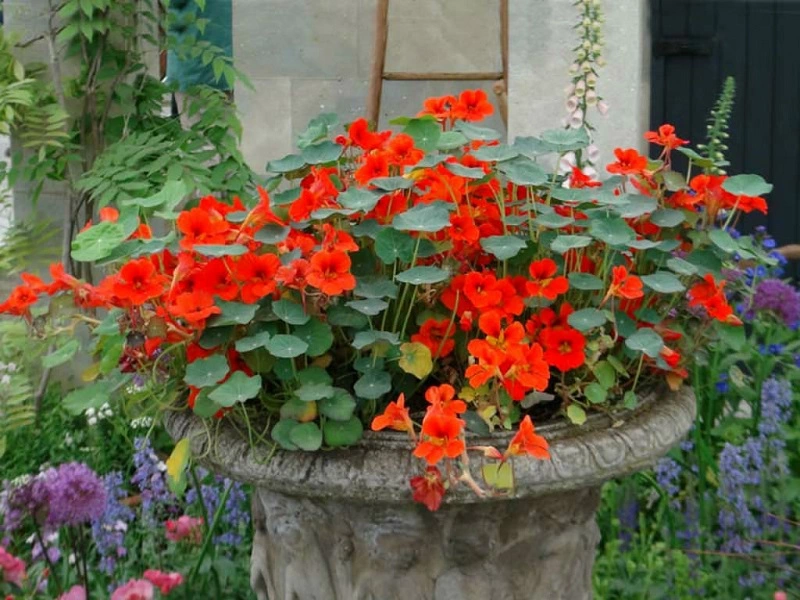
Kapuzinerkresse-Samen - wann säen wir sie aus?
Kapuzinerkresse ist eine Pflanze, die im Frühjahr ausgesät wird. Ende April ist die beste Zeit für die Aussaat von Kapuzinerkresse. Vieles hängt jedoch von den Wetterbedingungen ab. Wenn noch niedrige Temperaturen oder Frost auftreten, sollte man bis Anfang Mai warten. Das ist besonders wichtig, wenn man diese Blumen in Garten Beete pflanzt.
Kapuzinerkresse kann auch früher gepflanzt werden, wenn sie in Kübeln gepflanzt werden soll - sie kann dann an kälteren Tagen ins Haus geholt werden.
Wann blüht die Kapuzinerkresse?
Die Blütezeit der Kapuzinerkresse hängt hauptsächlich von den Wetterbedingungen ab. Die meisten Sorten blühen im Sommer - im Juli. Die Blüten bleiben bis Ende August stehen. Wenn die Temperaturen höher sind, kann die Blütezeit früher beginnen.
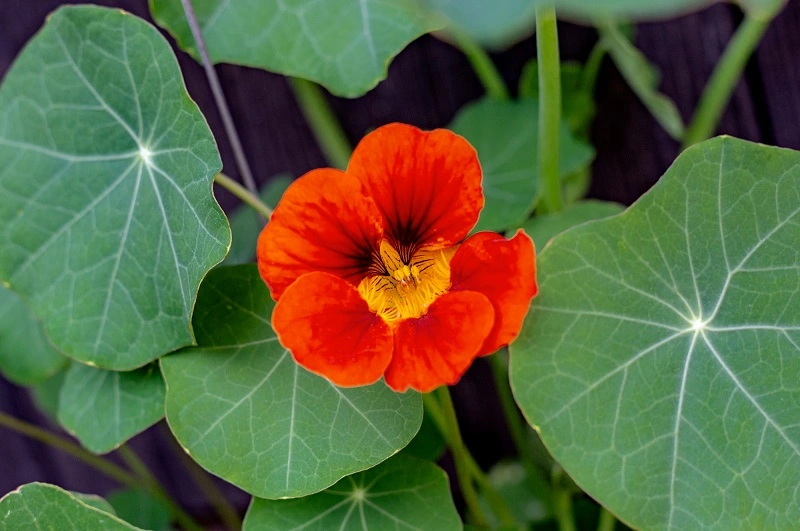
Ist Kapuzinerkresse essbar? Vorteile der Pflanze
Die Kapuzinerkresse wird nicht nur als Zierpflanze geschätzt. Die Pflanze hat viele medizinische Eigenschaften. Die in ihr enthaltenen ätherischen Öle sind die am häufigsten verwendeten Inhaltsstoffe. Sie bieten die folgenden Eigenschaften:
- antibakteriell,
- antimykotisch,
- entzündungshemmend.
Dank dieser Eigenschaften ist Kapuzinerkresse-Extrakt ein hervorragendes Mittel gegen Akne-Flecken. Es beschleunigt auch die Heilung von verschiedenen Infektionen und Wunden.
Interessanterweise sind Kapuzinerkressen essbar und können in der Küche verwendet werden. Sie sind eine beliebte Zutat für Desserts und Salate. Die Pflanze hat einen milden Geschmack und unterstreicht perfekt verschiedene Gerichte. Manche Menschen verwenden sie auch als Zutat für verschiedene Liköre.
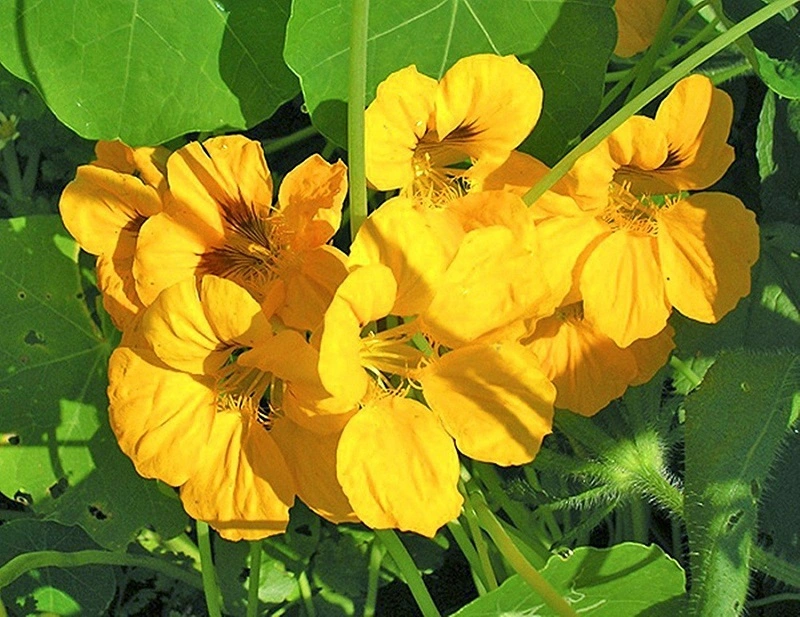
Ist Kapuzinerkresse giftig?
Kapuzinerkresse ist für den Menschen nicht giftig. Darüber hinaus kann der regelmäßige Verzehr dieser Pflanzen die Funktion der Harnwege verbessern. Produkte mit Kapuzinerkresse-Extrakt sind gut für Hautprobleme. Allerdings muss man vorsichtig sein, da einige Kapuzinerkresse-Sorten für Tiere schädlich sein können.
Kapuzinerkresse - was kann der Pflanze schaden?
Die Kapuzinerkresse ist im Allgemeinen gegen verschiedene Krankheiten resistent. Schädlinge sind die größte Bedrohung für sie. Zu den größten Schädlingen gehören:
- Raupen,
- Blattläuse,
- Nacktschnecken,
- Spinnmilben.
Wenn Sie ein Problem bemerken, sollten Sie sofort reagieren und ein geeignetes Mittel - natürlich oder chemisch - einsetzen.
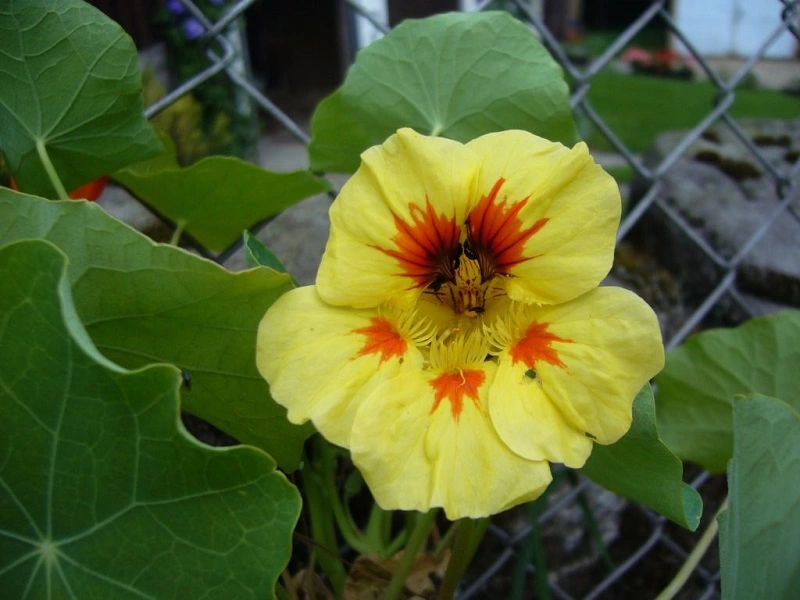
📍 Wie lange braucht die Kapuzinerkresse zum Wachsen?
Kapuzinerkresse braucht nicht viel Zeit zum Wachsen. Nachdem die Samen in den Boden gepflanzt wurden, wachsen sie in der Regel nach 12-20 Tagen, je nach den Bedingungen, die sie vorfinden.
📍 Warum blüht meine Kapuzinerkresse nicht?
Es gibt einige mögliche Gründe, warum Kapuzinerkresse nicht blüht. Ein ungünstiger Standort und eine schattige Pflanzung sind die typischen Ursachen. Auch ein übermäßig bewässerter Boden oder zu viele Nährstoffe können den Blühprozess der Kapuzinerkresse beeinträchtigen.
📍 Wann sollte man Kapuzinerkresse pflanzen?
Kapuzinerkresse ist wärmeliebend, deshalb sollte man sie nicht zu früh pflanzen. Ende April oder Anfang Mai ist die beste Zeit - je nach den Temperaturen.
📍 Wo pflanzt man Kapuzinerkresse?
Kapuzinerkresse sollte an einem sonnigen, windgeschützten Standort gepflanzt werden. Am besten eignen sich Beete, an die sich die Ranken anlehnen können. Sie können Kapuzinerkresse auch in Kübeln pflanzen und auf dem Balkon oder der Terrasse aufstellen.
Empfohlene Artikel




